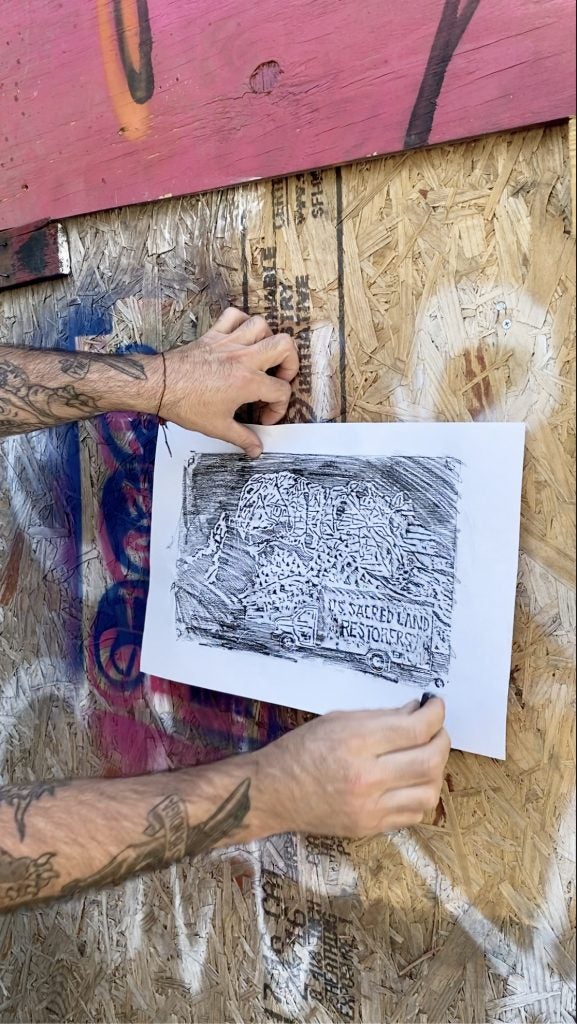

In the summer of 2020, I was living in Richmond, Virginia. The city was busy boarding up business windows, taking down Confederate monuments, and residents were out day and night marching with demands for change. All of this happening in the thick of a pandemic. I wanted to contribute to the visual transformation of the city and supply protesters with images that could be easily reproduced.


The oldest and most accessible printmaking technique of rubbing made perfect sense for the project. The hand-carved plywood reliefs are a nod to ancient storytelling and retrofitted with current make-believe headlines. Passersby with a piece of paper and a crayon could record multiples of the message to use in whatever capacity they see fit. It was important that the woodcuts were installed on the same day of the breaking story in order to ride the subsequent emotional media wave that empowers movements.


The carvings are political cartoon-like re-representations of fake news: humorous, positively fantastical, and socially charged. For example, the CEO of Goya turns into a Jack-in-the-box, SpaceX plants a BLM flag on the surface of Mars, the fictitious US Sacred Land Restorers return Mount Rushmore to its original state, and ICE agents resembling pigs inspired by Emory Douglas illustrations find themselves behind bars and inside an ice cube.


Enrique Figueredo is a Venezuelan-American artist who immigrated from South America at a young age. Working primarily with woodcuts, Enrique creates outdoor public installations and hand-printed works on paper that respond to current events and visually weave together history, the present, and the future using iconography.

